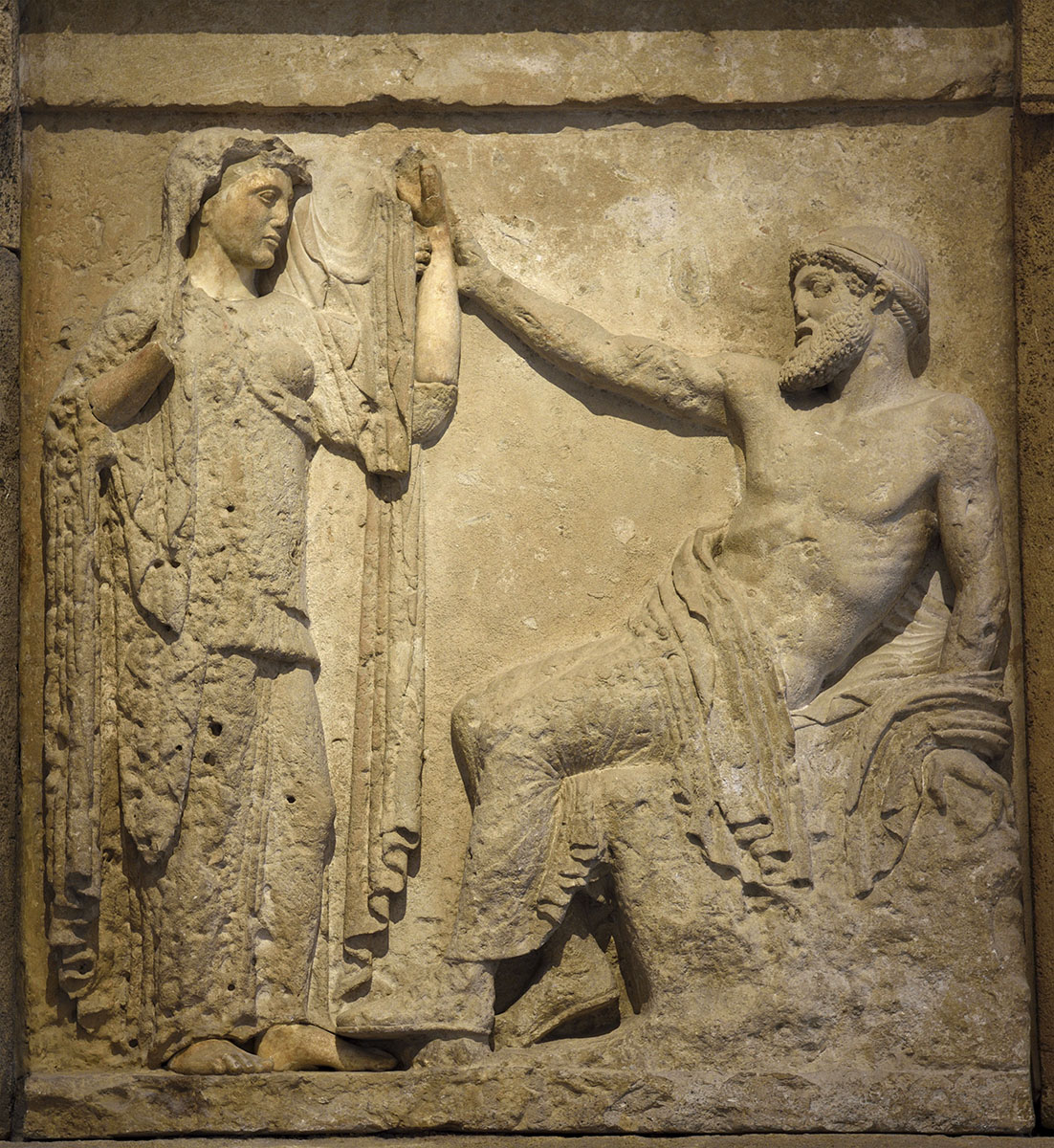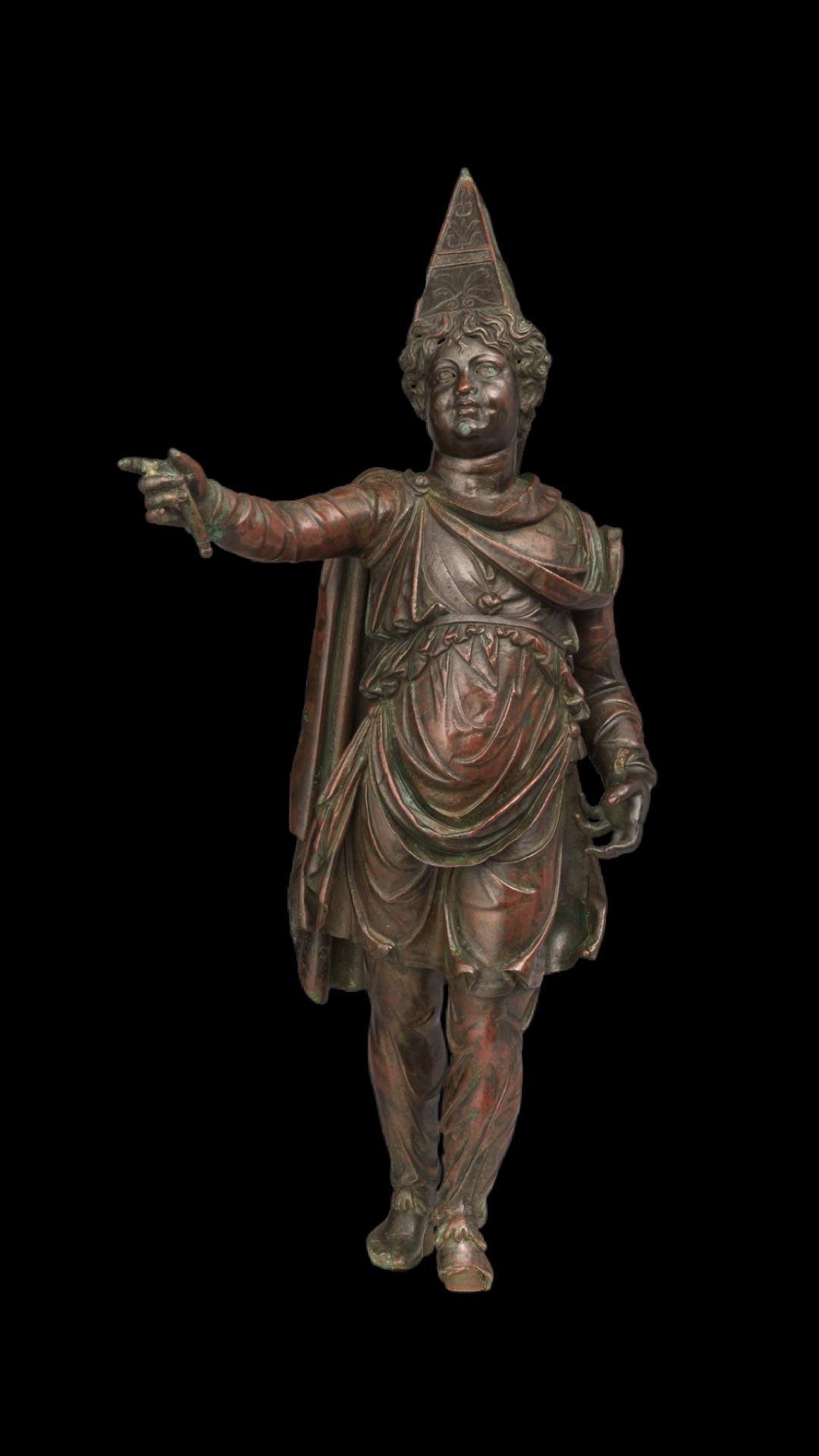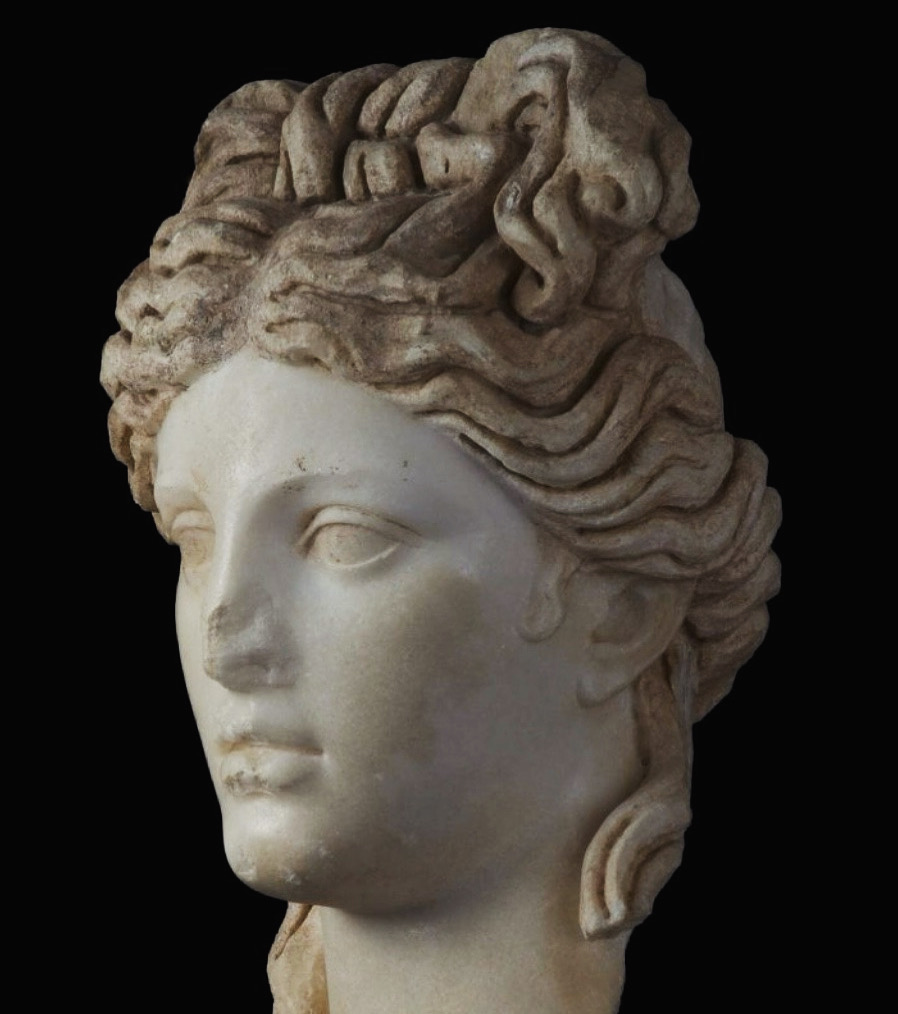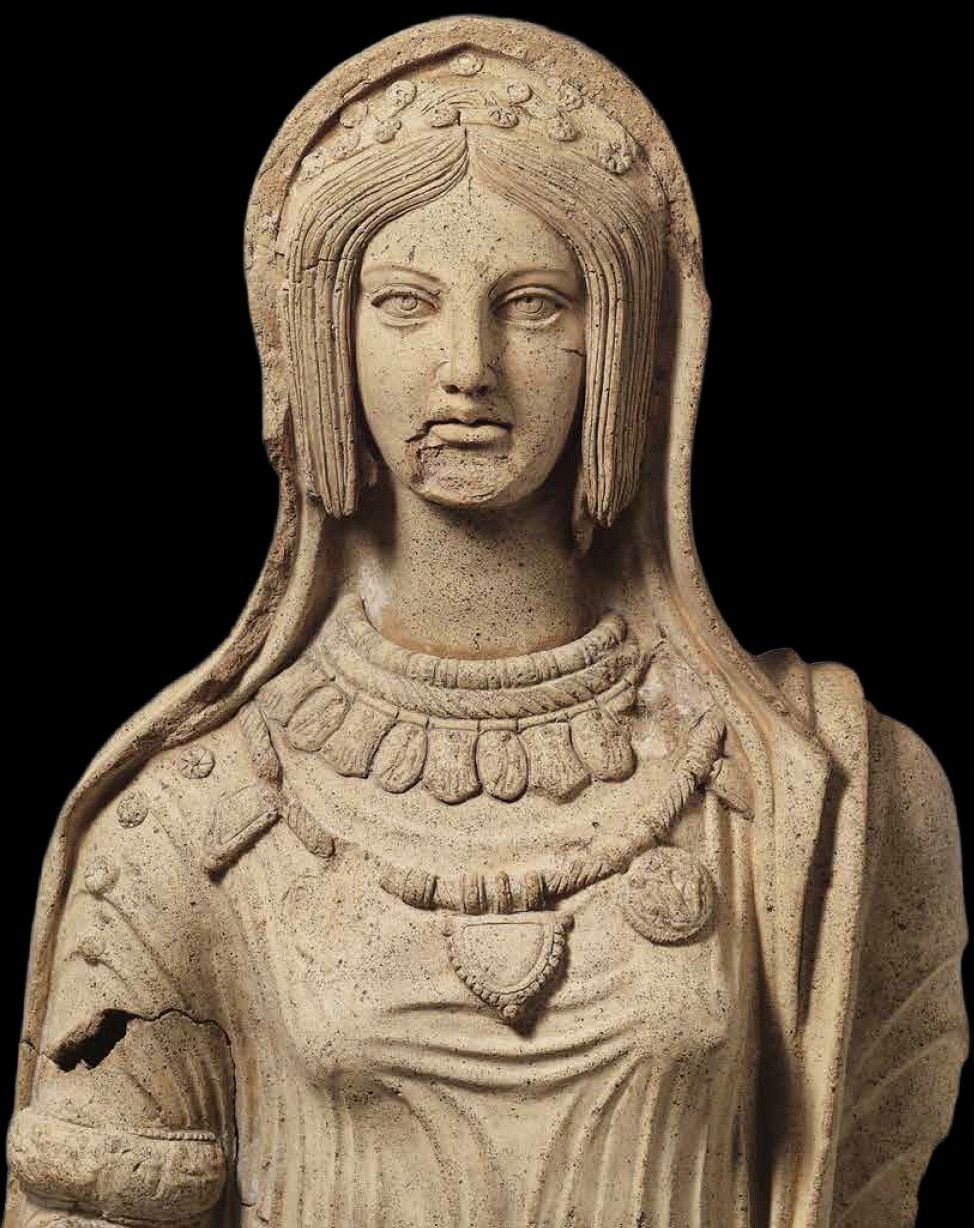One of Hera’s epithets was “leukolenos,” or “white-limbed” and I find it delectably appropriate for this metope from Temple E at Selinunte in Sicily.
Magna Graecia was flush with natural resources, but good quality white marble was not one of them. Faced with this dearth of raw materials, acrolithic sculpture (meaning composite, with marble combined with a lesser quality stone, or another material such as wood) was a most excellent solution. The prized white marble from the Greek islands (Paros, Naxos, etc.) was imported at great expense, and used for the most important bits of a sculpture (freestanding or architectural).
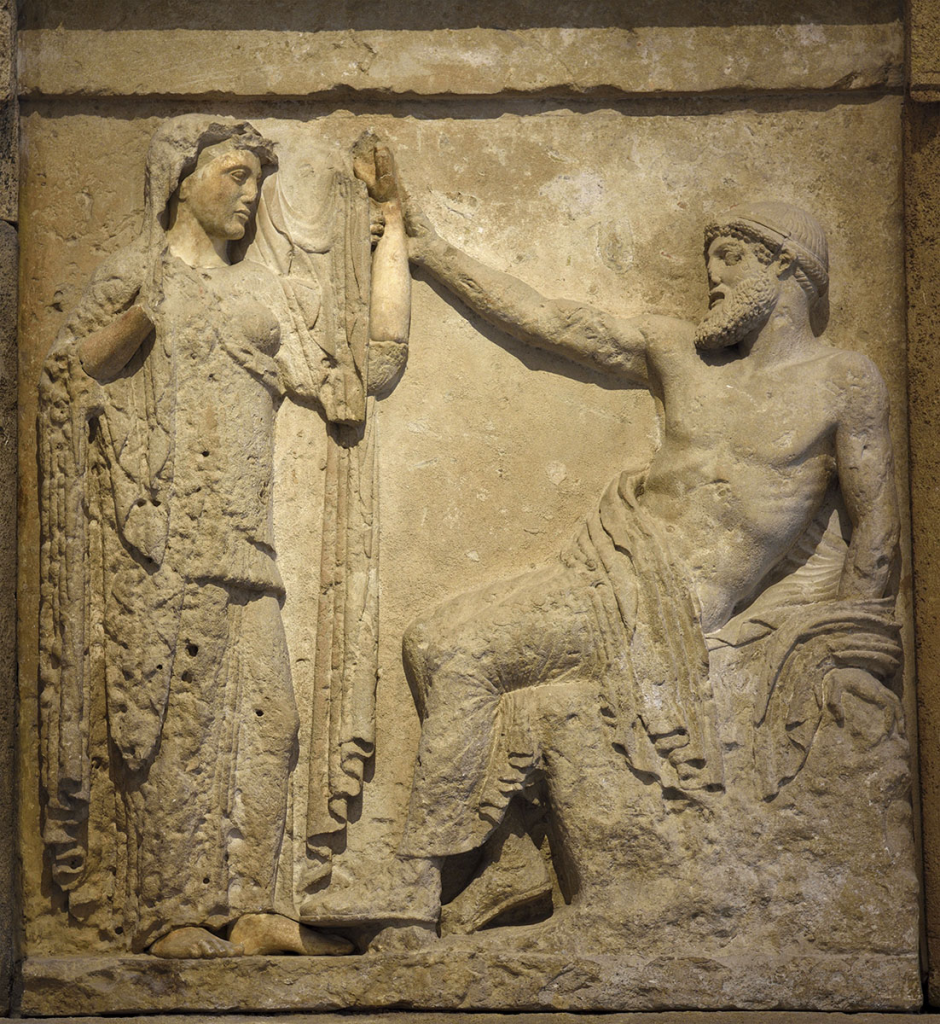

In this case Hera’s face and famous white arms (and feet) are carved from imported Greek marble, and set into the metope which, like the rest of the temple, is carved from local limestone – softer, shelly, and altogether not the right thing for the most jealous of goddesses.
The scene shows the “hieros gamos”, the sacred marriage between Hera and Zeus in their happier days. Hera lifts her veil, while her seated (very muscular) husband grasps her wrist – together these signal nuptials. Temple E was one of the finest Early Classical temples in the Greek world, nearly contemporary with the Temple of Zeus at Olympia, and is incredibly well preserved. The metopes are in the Palermo Archaeological Museum, and the re-erected temple is the jewel of Selinunte’s eastern hill.

